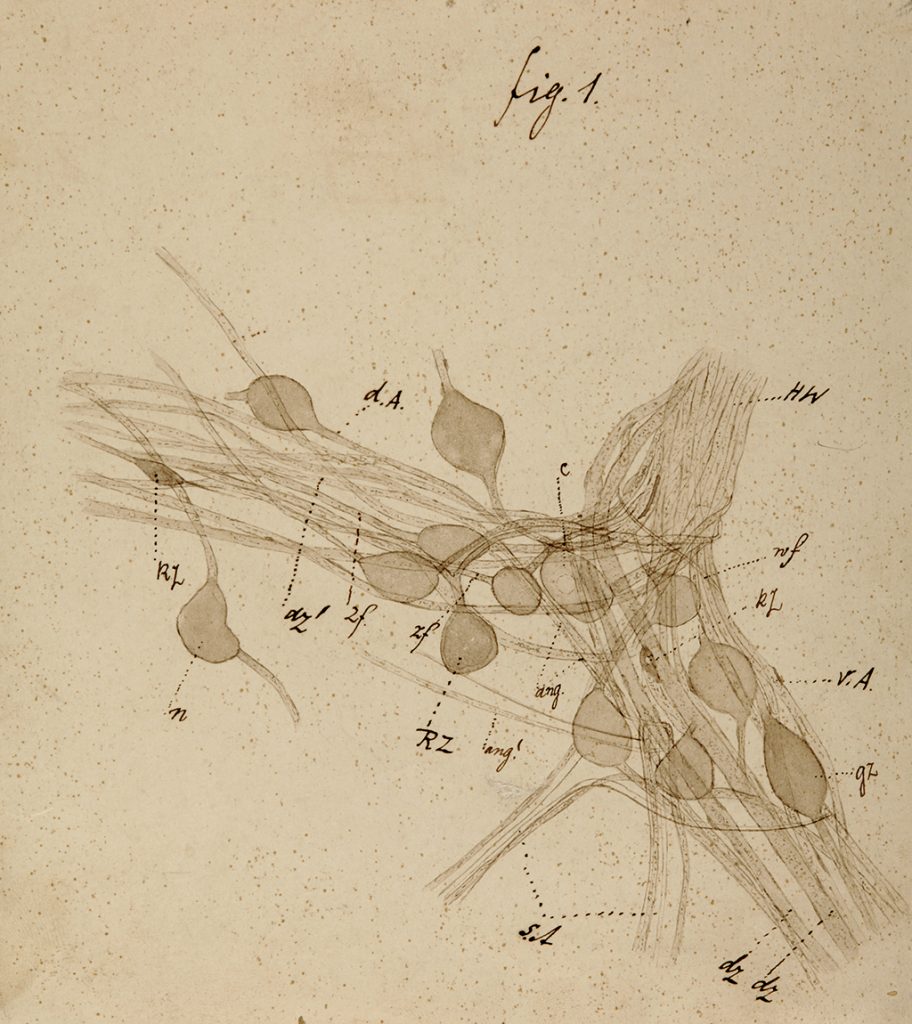Freud’s early scientific career was a journey from biology to psychoanalysis.

Drawings of spinal ganglia and spinal cord of petromyzon fish by Freud, 1878
This exhibition traces his scientific development, from his earliest work on the spinal ganglia of a primitive species of fish through to a study of the medulla oblongata of the human brain. From the 1880s to the 1890s he was transformed from a neurologist, a specialist in nerves, to a therapist treating sufferers from hysteria and neuroses.
“In a certain sense I nevertheless remained faithful to the line of work upon which I had originally started. The subject which Brücke had proposed for my investigations had been the spinal cord of one of the lowest of the fishes (Ammocoetes Petromyzon); and I now passed on to the human central nervous system. . […] The fact that I began by choosing the medulla oblongata as the one and only subject of my work was another sign of the continuity of my development.”
Sigmund Freud, An Autobiographical Study
In 1885 Freud gained a scholarship to study in Paris under the world-famous Jean-Martin Charcot, director of the Salpêtrière clinic which was described at the time as a “museum of living pathology” because of the variety of patients and disorders to be found there. Freud continued his studies of brain pathology in the laboratories, but it was Charcot’s presentations of hysterical cases which most impressed him.
“A layman will no doubt find it hard to understand how pathological disorders of the body and mind can be eliminated by “mere” words of the doctor. He will feel that he is being asked to believe in magic. And he will not be so very wrong, for the words which we use in our everyday speech are nothing other than faded magic.”
Sigmund Freud, 1890